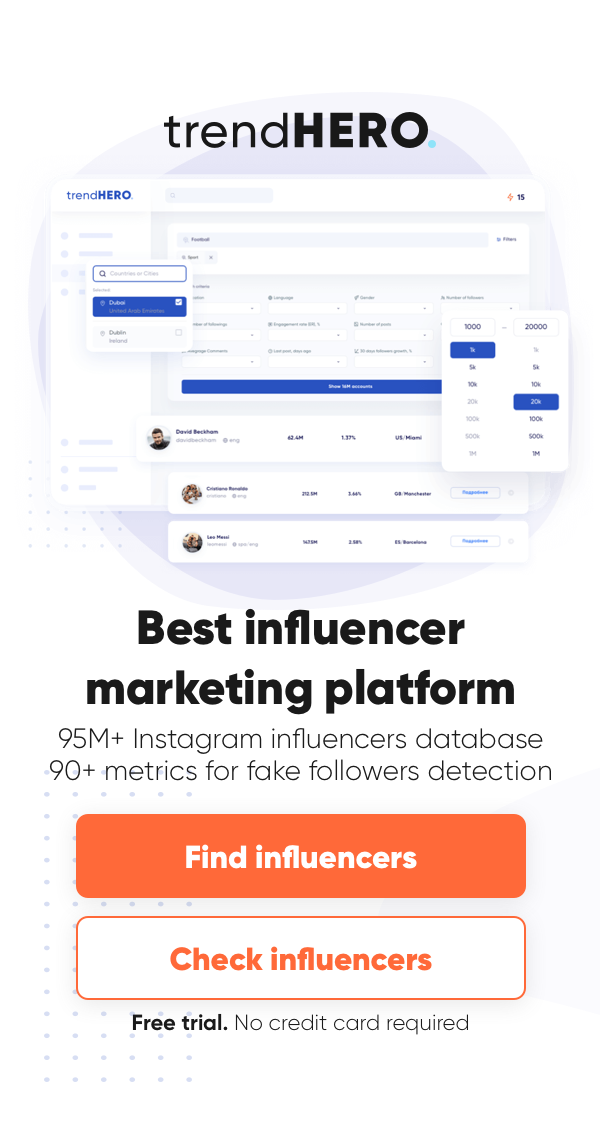- Home
- BLOG
- Influencers
- Best influencer analytics tools in 2023
In recent years, influencer marketing has become a critical component of many companies’ digital marketing strategies. This is due in part to the rise of social media and the increasing popularity of platforms like Instagram, TikTok, and YouTube.
Influencers, who are typically individuals with large followings on social media, have the ability to reach and influence their followers in a way that traditional advertising methods cannot.
By partnering with influencers, brands can tap into their audiences and gain exposure to new potential customers. As a result, influencer marketing has become a key way for brands to build awareness, increase engagement, and drive sales in the digital age.
What are influencer analytics tools?
Influencer analytics tools are software platforms designed to help marketers measure the effectiveness of their influencer marketing campaigns.
The purpose of these tools is to help marketers identify the right influencers for their brand, track the performance of their influencer campaigns, and make data-driven decisions about their marketing strategies.
Influencer analytics tools use a variety of metrics to measure the success of influencer campaigns, including engagement rates, reach, impressions, clicks, conversions, and more. By collecting and analyzing this data, marketers can gain insights into their target audience’s behavior and preferences, as well as the effectiveness of their influencer content.
Some examples of influencer analytics tools include HypeAuditor, Influencer.co, and trendHERO. These tools typically offer features such as influencer discovery, engagement calculators, audience demographics, and performance analytics, all designed to help marketers measure and optimize the success of their influencer campaigns.
Types of influencer analytics tools
There are several types of influencer analytics tools available to help marketers measure the effectiveness of their influencer marketing campaigns. Here are some of the most common types:
- Account Audience Analysis Tools: These tools provide reports about influencer followers. Audience demographics (gender, age, location, language, and others) and reachability, fake detection, best time for posting and content efficiency, growth patterns and audience overlaps, followers interests and similar accounts. Everything to make you know if the influencer has your target audience.
- Social Listening Tools: These tools allow marketers to monitor social media conversations and track mentions of their brand, products, or industry. Social listening tools can help identify potential influencers, track the sentiment of conversations, and measure the impact of influencer campaigns.
- Influencer Discovery Platforms: These tools help marketers find and connect with influencers who are a good fit for their brand. They often include search filters based on criteria such as industry, audience demographics, and engagement rates, and can help streamline the influencer outreach process.
- Engagement Calculators: These tools help marketers measure the engagement levels of influencer content, such as likes, comments, and shares. This data can help determine the effectiveness of influencer campaigns and identify areas for improvement. Try our ER calculator for free
- Performance Analytics Platforms: These tools provide in-depth analytics and reporting on the performance of influencer campaigns. They can track key metrics such as reach, impressions, clicks, and conversions, and provide insights into audience demographics, content performance, and ROI.
- Management Platforms: These tools help marketers manage their influencer campaigns and collaborations from start to finish. They can include features such as campaign management, content creation, payment processing, and performance tracking.
Overall, there are many different types of influencer analytics tools available, each with its own unique set of features and capabilities. Marketers should choose the tools that best meet their needs and align with their goals for their influencer campaigns.
Popular influencer analytics tools
trendHERO

trendHERO is a relatively new influencer analytics tool that offers comprehensive insights into influencers’ performance on various social media platforms. It uses AI to analyze influencer audiences, engagement rates, and content performance. Main advantages of trendHERO are its huge database of Instagram accounts (100M+), in-depth analytics, affordable pricing, whereas its disadvantage is its limited number of platforms compared to other tools (Instagram only).
HypeAuditor

HypeAuditor is a popular influencer analytics tool that is widely used to analyze influencer campaigns. It uses AI technology to analyze and track influencer’s audience demographics, engagement rates, and authenticity of followers. One of the main advantages of HypeAuditor is its accuracy in detecting fake followers and engagement. However, its disadvantage is that its pricing can be a bit high for smaller businesses.
Emplifi (formely Socialbakers)
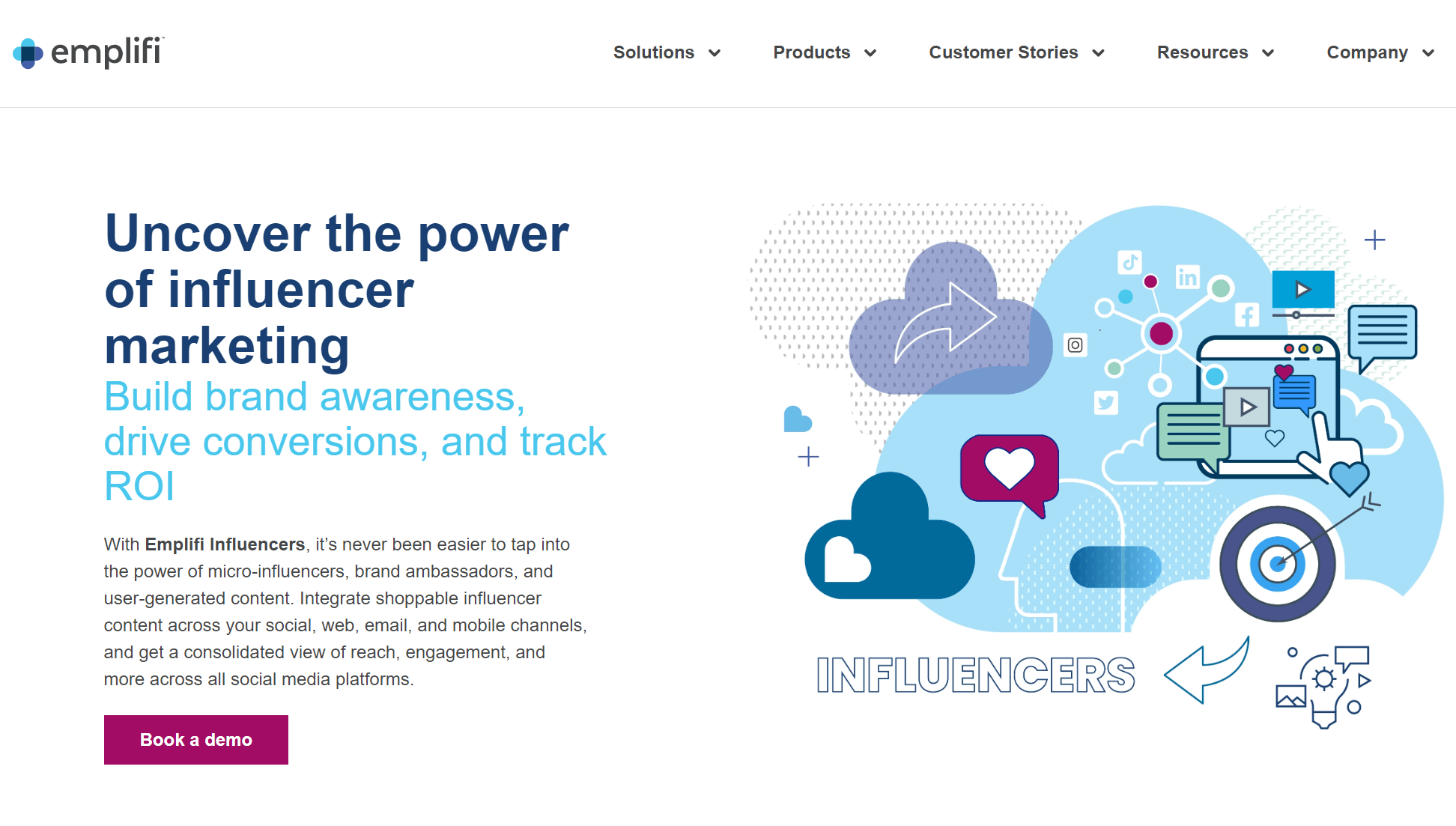 Emplifi is a comprehensive influencer analytics tool that provides insights into influencers’ performance on various social media platforms, including Facebook, Instagram, Twitter, and YouTube. It offers advanced analytics features like competitor analysis, audience segmentation, and content analysis. The advantage of Socialbakers is its ability to provide real-time analytics, whereas its disadvantage is its complexity, which may take some time to learn.
Emplifi is a comprehensive influencer analytics tool that provides insights into influencers’ performance on various social media platforms, including Facebook, Instagram, Twitter, and YouTube. It offers advanced analytics features like competitor analysis, audience segmentation, and content analysis. The advantage of Socialbakers is its ability to provide real-time analytics, whereas its disadvantage is its complexity, which may take some time to learn.
Upfluence
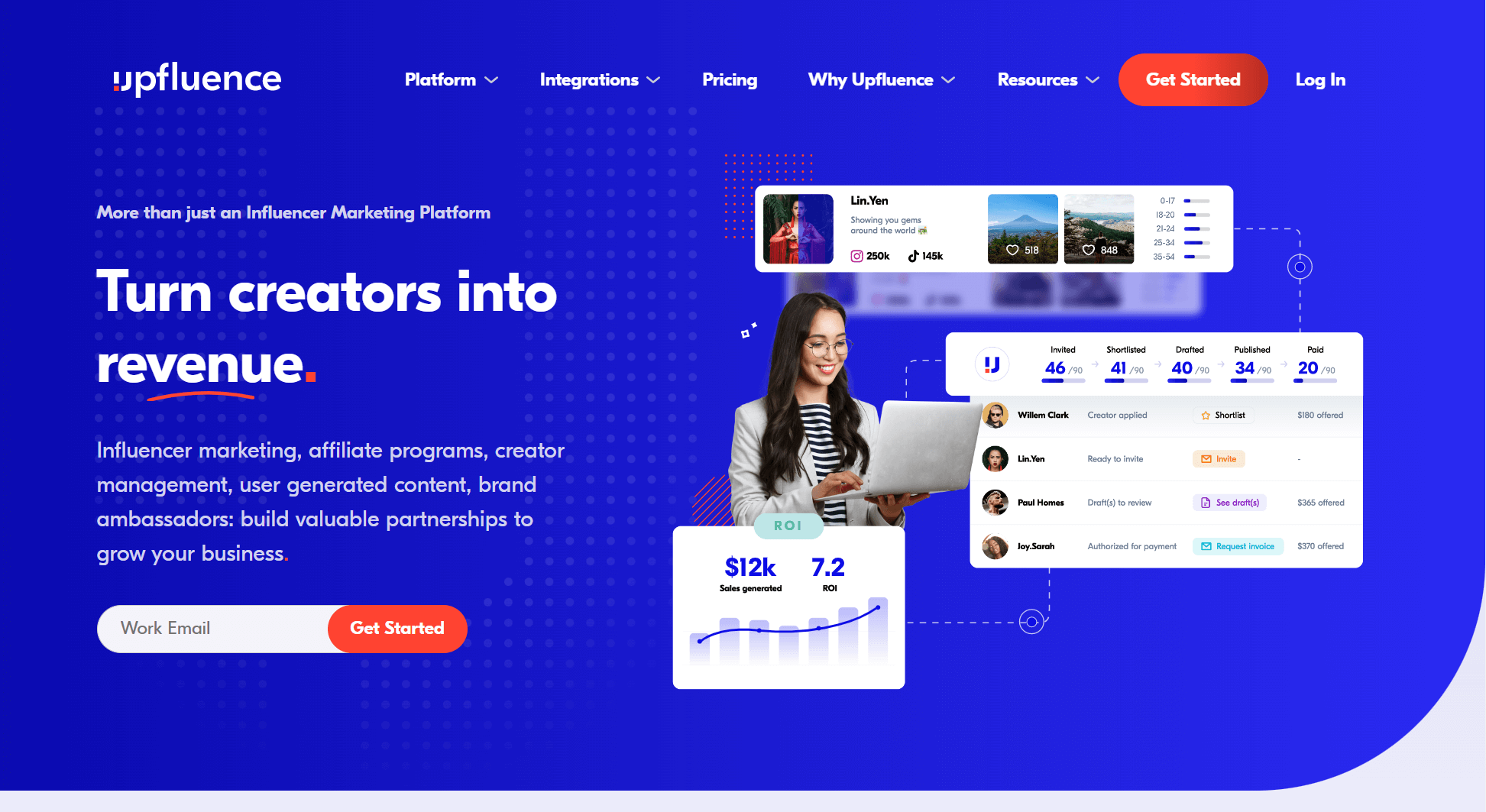
Upfluence is an influencer marketing platform that uses machine learning to help businesses find the right influencers to work with. It provides data-driven insights into influencer audiences, engagement rates, and content performance. The advantage of Upfluence is its comprehensive database of influencers, whereas its disadvantage is that it can be pricey for small businesses.
Traackr
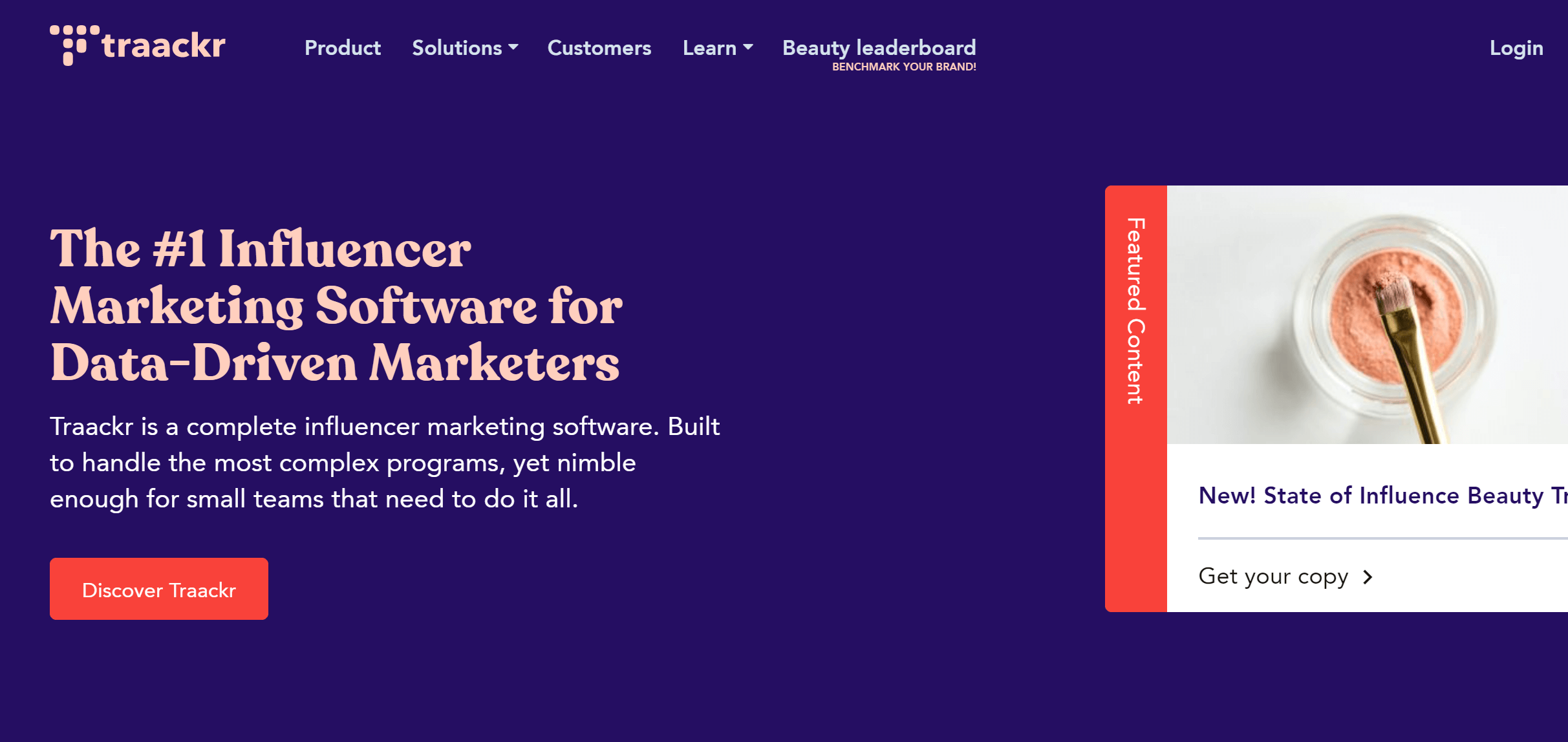
Traackr is an influencer management platform that offers a wide range of features, including influencer discovery, relationship management, and performance analytics. It provides detailed insights into influencers’ audiences, engagement rates, and content performance. The advantage of Traackr is its ability to provide personalized recommendations for influencer collaborations, whereas its disadvantage is its higher pricing.
Heepsy
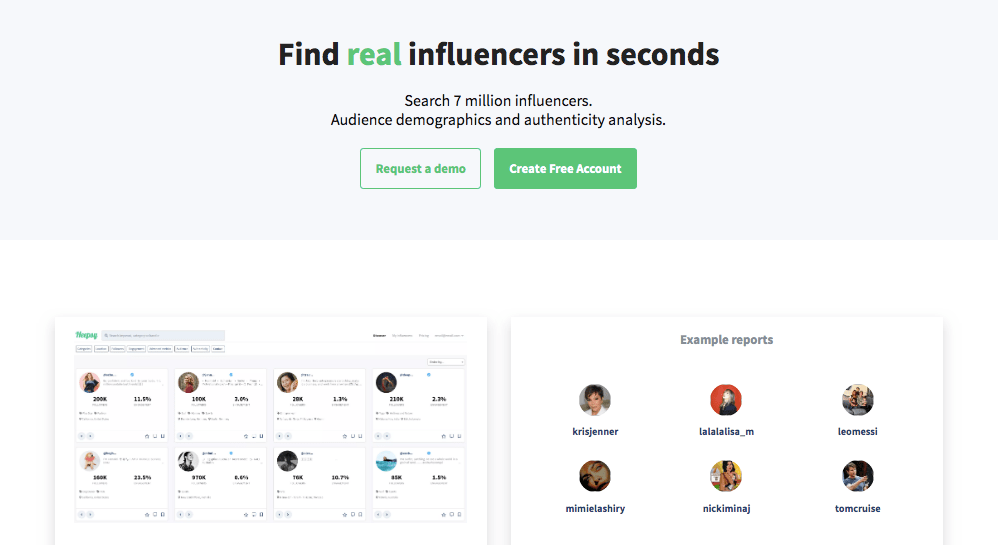
Heepsy is an influencer marketing platform that provides insights into influencers’ demographics, engagement rates, and audience authenticity. It offers advanced search features to find influencers based on specific criteria and also provides contact information to help businesses connect with influencers. Heepsy’s advantage is its user-friendly interface and affordable pricing.
Klear
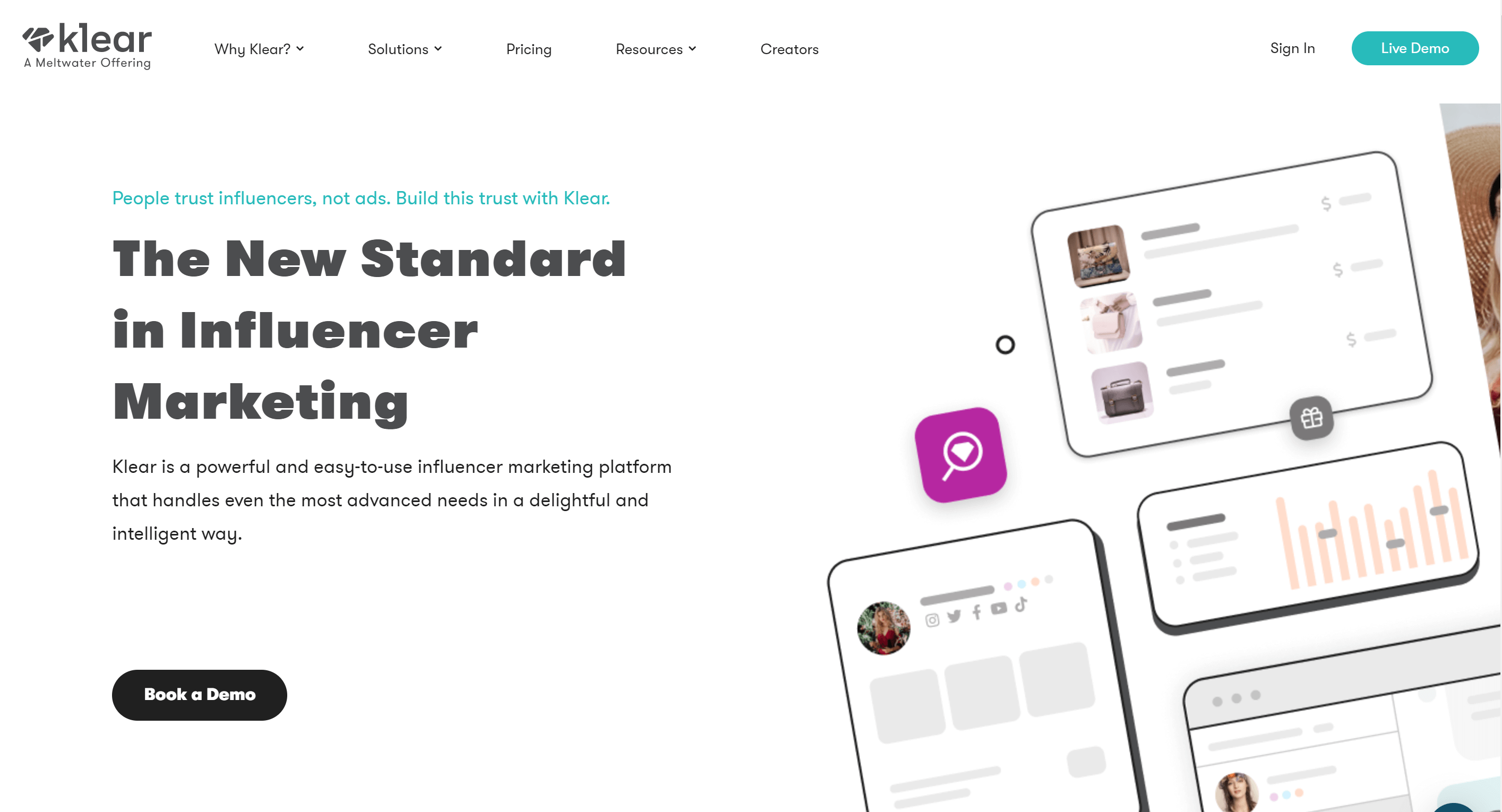
Klear is an influencer analytics platform that provides insights into influencers’ audiences, content performance, and engagement rates. It offers advanced search features to find influencers based on specific criteria and also provides competitor analysis to help businesses benchmark their performance against competitors. Klear’s advantage is its comprehensive influencer database, whereas its disadvantage is its higher pricing.
Julius (formely HYPR)
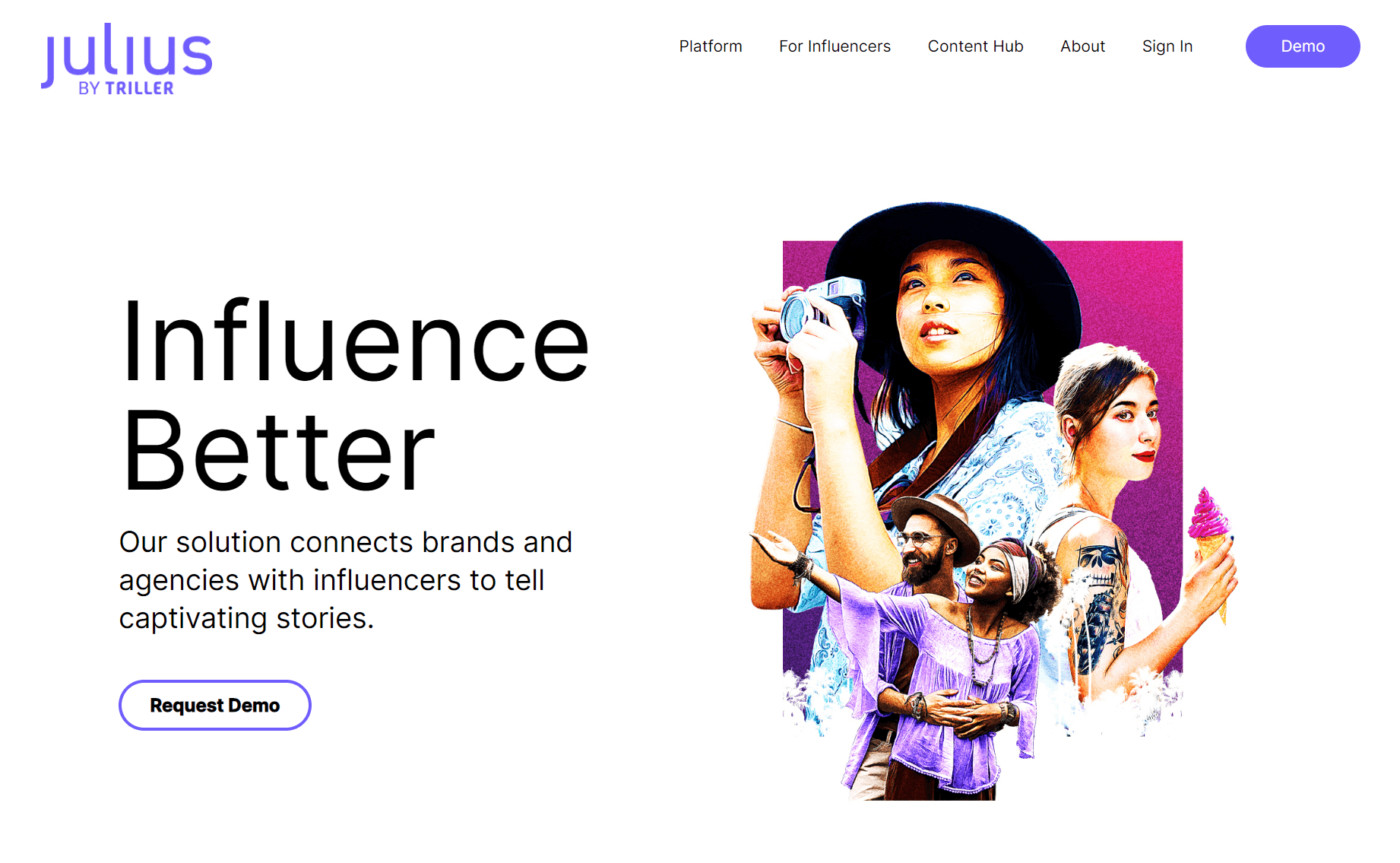
Julius is an influencer analytics tool that uses AI to analyze influencer audiences, engagement rates, and content performance. It provides real-time insights into influencer campaigns and offers features like campaign management and influencer relationship management. Julius’s advantage is its advanced fraud detection capabilities, whereas its disadvantage is its higher pricing.
Aspire

Aspire is an influencer marketing platform that provides insights into influencers’ demographics, engagement rates, and content performance. It offers features like influencer discovery, campaign management, and influencer relationship management. Aspire’s advantage is its user-friendly interface and affordability, whereas its disadvantage is its limited database of influencers.
How to choose the right influencer analytics tool for your brand
Here are some tips on how to select the best influencer analytics tool for your specific needs, such as:
- Identify your goals and objectives for your influencer campaigns
- Assess your budget and the pricing models of different tools
- Evaluating the user interface and ease of use of each tool
- Read reviews and compare features across different tools
Why are influencer analytics tools important for marketers?
There are several benefits to using influencer analytics tools to measure the effectiveness of your influencer marketing campaigns:
- Identifying the right influencers for your brand: Influencer analytics tools can help you find influencers who are a good fit for your brand by analyzing factors such as their audience demographics, engagement rates, and content themes. This can help ensure that your influencer collaborations reach the right audience and drive meaningful results.
- Measuring the ROI of your influencer campaigns: With influencer analytics tools, you can track the performance of your influencer campaigns and measure their impact on your business goals, such as increased brand awareness, website traffic, and sales. This allows you to make data-driven decisions about your marketing strategy and optimize your influencer collaborations for maximum ROI.
- Tracking the engagement and reach of your influencer content: Influencer analytics tools allow you to track metrics such as likes, comments, shares, reach, and impressions for your influencer content. This provides valuable insights into the effectiveness of your content and allows you to identify areas for improvement and optimization.
- Gaining insights into your target audience’s preferences and behavior: Influencer analytics tools provide data and insights into your target audience’s behavior and preferences, such as their demographics, interests, and engagement patterns. This information can be used to inform your overall marketing strategy and create more targeted and effective campaigns.
Overall, using influencer analytics tools can help marketers make data-driven decisions about their influencer marketing campaigns and optimize their strategies for maximum impact. By identifying the right influencers, measuring the ROI of campaigns, tracking engagement and reach, and gaining insights into audience behavior, marketers can create more effective and targeted campaigns that drive real results for their business.
Are influencer analytics tools everything you need for influencer marketing?
Unpopular opinion: Influencer analytics tools are not as important for marketers as some may think.
While it is true that influencer marketing has become an increasingly popular strategy for many businesses, and influencer analytics tools can provide valuable insights into the effectiveness of these campaigns, there are other factors that should take precedence in a marketer’s overall strategy.
For example, instead of relying solely on influencer analytics tools to measure the success of their campaigns, marketers should also be focused on creating valuable content that resonates with their target audience, building strong relationships with their customers, and fostering a positive brand reputation.
Influencer analytics tools can certainly be useful in providing data-driven insights and identifying areas for improvement, but they should not be the sole focus of a marketer’s strategy. Marketers should prioritize building a strong brand identity, developing creative and engaging content, and fostering strong relationships with their audience through multiple channels and tactics.
In this case analytics tools help to find the right influencer according to your strategy. Simple put, if you don’t know the audience you target, no tool will help you to find an influencer with your target audience.
In short, while influencer analytics tools can provide valuable insights into the success of influencer campaigns, they should be used in conjunction with other marketing strategies to ensure the overall success and longevity of a brand’s marketing efforts.
Conclusion
We highly encourage marketers to research and experiment with different influencer analytics tools. Influencer marketing is a rapidly growing industry, and it’s essential to have accurate data and insights to plan your influencer campaigns.
It’s essential to find the influencer analytics tool that works best for your specific needs and goals. Some tools might be more suitable for tracking engagement, while others might be better for monitoring your brand’s online reputation.
By experimenting with different influencer analytics tools, you can gain a deeper understanding of your audience, track the success of your campaigns, and make data-driven decisions to optimize your influencer marketing strategy.
We also recommend to read
 15 Best Free Instagram Analytics Tools to Use in 2023 (Updated)
15 Best Free Instagram Analytics Tools to Use in 2023 (Updated)  How to Find Micro-Influencers in 10 Steps
How to Find Micro-Influencers in 10 Steps  Best Instagram Tools Every Business Should Use in 2023
Best Instagram Tools Every Business Should Use in 2023  How to Connect With Influencers on Instagram
How to Connect With Influencers on Instagram  How to Create An Influencer Outreach Strategy in 7 Easy Steps
How to Create An Influencer Outreach Strategy in 7 Easy Steps  How to Find Similar Influencers in 2023
How to Find Similar Influencers in 2023Instagram Engagement Rate Calculator For Free
Check any influencer's Engagement rate and analyze his or her followers growth history
Other free tools: Follower Count History, Instagram Follower Count, CPM Calculator
